The
Wiley Handbook of Gender Equity in Higher Education (Wiley Handbooks in Education) 1st Edition Nancy S. Niemi (Editor)
Visit to download the full and correct content document: https://ebookmass.com/product/the-wiley-handbook-of-gender-equity-in-higher-educa tion-wiley-handbooks-in-education-1st-edition-nancy-s-niemi-editor/

More products digital (pdf, epub, mobi) instant download maybe you interests ...
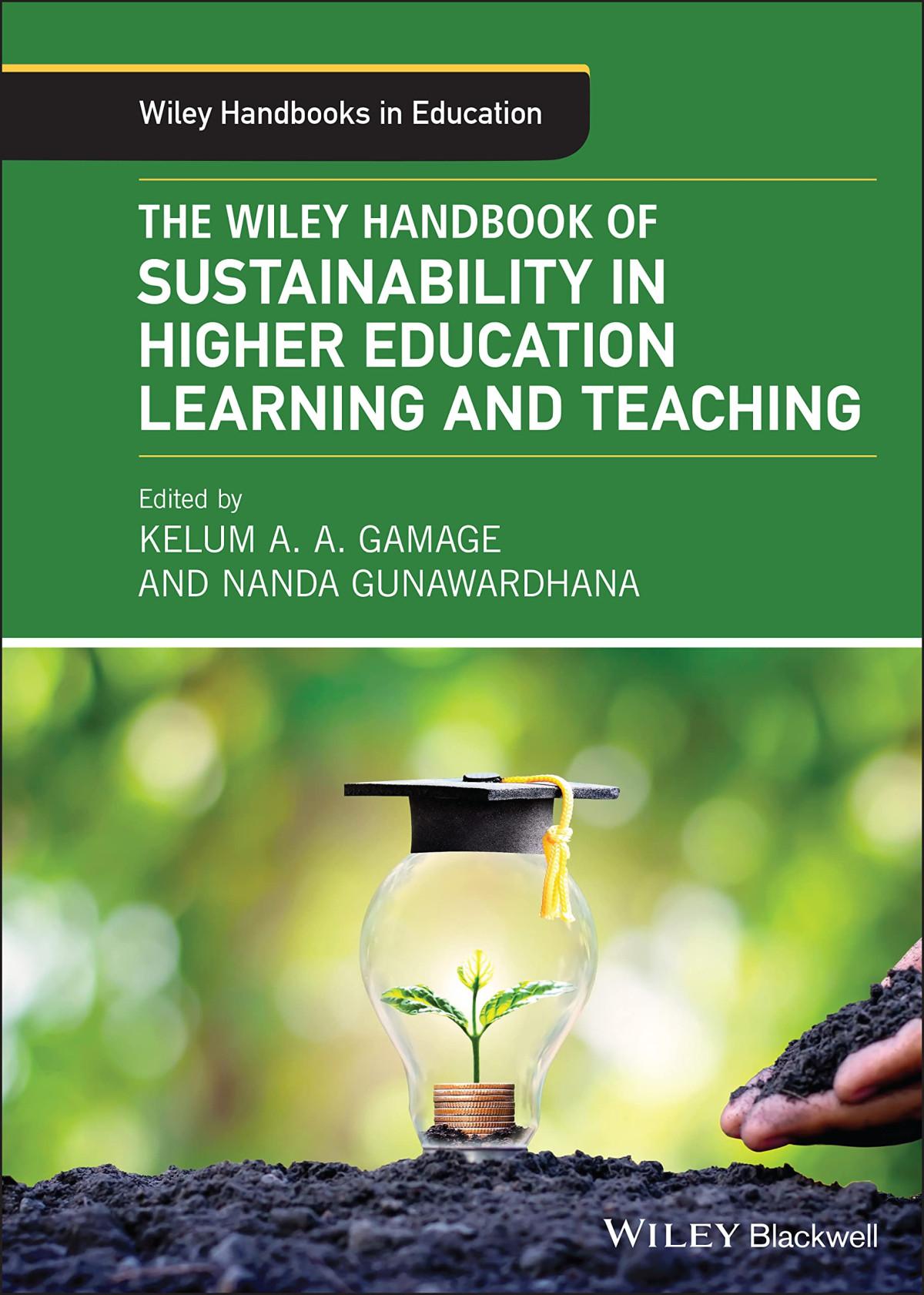
The Wiley Handbook of Sustainability in Higher Education Learning and Teaching Kelum A. A. Gamage
https://ebookmass.com/product/the-wiley-handbook-ofsustainability-in-higher-education-learning-and-teaching-kelum-aa-gamage/
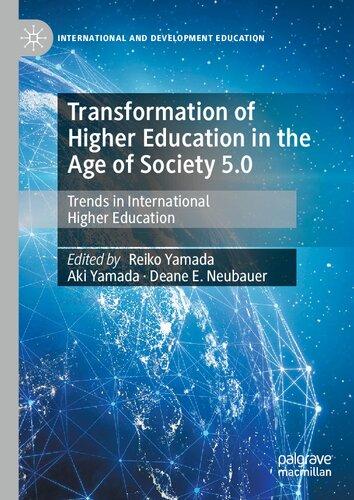
Transformation of Higher Education in the Age of Society 5.0: Trends in International Higher Education 1st Edition Reiko Yamada
https://ebookmass.com/product/transformation-of-higher-educationin-the-age-of-society-5-0-trends-in-international-highereducation-1st-edition-reiko-yamada/
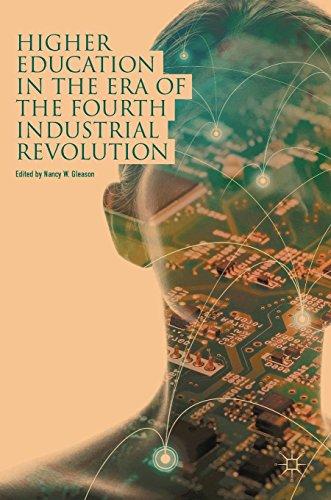
Higher Education in the Era of the Fourth Industrial Revolution 1st ed. 2018 Edition Nancy W. Gleason
https://ebookmass.com/product/higher-education-in-the-era-of-thefourth-industrial-revolution-1st-ed-2018-edition-nancy-w-gleason/
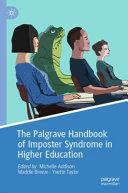
The Palgrave Handbook of Imposter Syndrome in Higher Education Michelle Addison
https://ebookmass.com/product/the-palgrave-handbook-of-impostersyndrome-in-higher-education-michelle-addison/
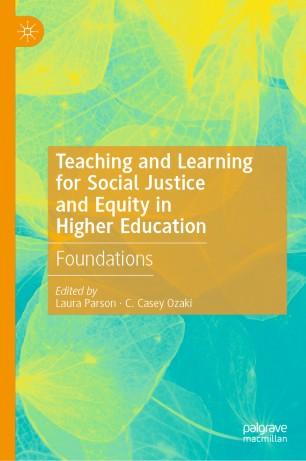
Teaching and Learning for Social Justice and Equity in Higher Education: Foundations 1st ed. Edition Laura Parson
https://ebookmass.com/product/teaching-and-learning-for-socialjustice-and-equity-in-higher-education-foundations-1st-ededition-laura-parson/
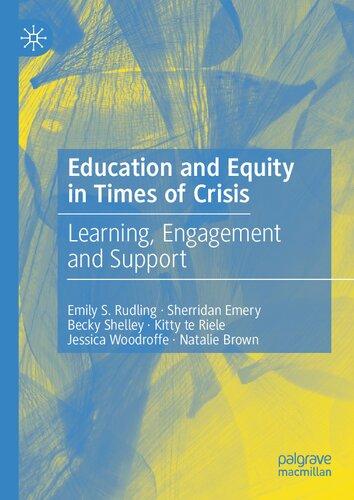
Education and Equity in Times of Crisis: Learning, Engagement and Support Emily S. Rudling
https://ebookmass.com/product/education-and-equity-in-times-ofcrisis-learning-engagement-and-support-emily-s-rudling/
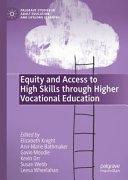
Equity and Access to High Skills through Higher Vocational Education Elizabeth Knight
https://ebookmass.com/product/equity-and-access-to-high-skillsthrough-higher-vocational-education-elizabeth-knight/
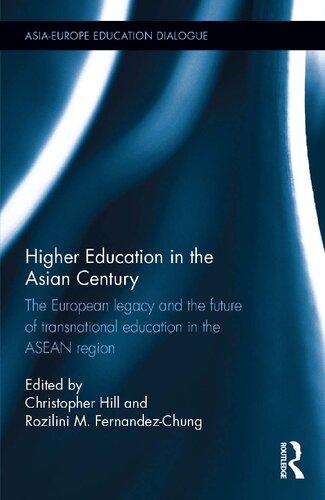
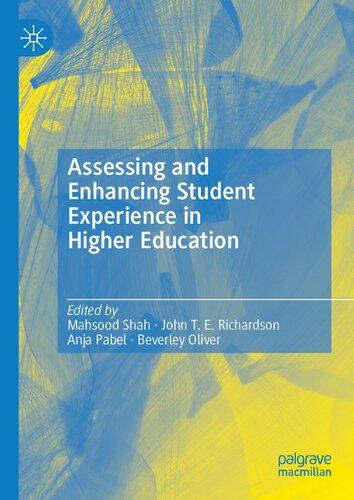
Higher Education in the Asian Century: The European legacy and the future of Transnational Education in the ASEAN region 1st Edition Christopher Hill (Editor)
https://ebookmass.com/product/higher-education-in-the-asiancentury-the-european-legacy-and-the-future-of-transnationaleducation-in-the-asean-region-1st-edition-christopher-hilleditor/
Assessing and Enhancing Student Experience in Higher Education
https://ebookmass.com/product/assessing-and-enhancing-studentexperience-in-higher-education/
The Wiley Handbook of Gender Equity in Higher Education
Wiley Handbooks in Education
The Wiley Handbooks in Education offer a capacious and comprehensive overview of higher education in a global context. These state‐of‐the‐art volumes offer a magisterial overview of every sector, subfield and facet of the discipline‐from reform and foundations to K‐12 learning and literacy. The Handbooks also engage with topics and themes dominating today’s educational agenda‐mentoring, technology, adult and continuing education, college access, race and educational attainment. Show casing the very best scholarship that the discipline has to offer, The Wiley Handbooks in Education will set the intellectual agenda for scholars, students, and researchers for years to come.
The Wiley Handbook of Paulo Freire
By Carlos Alberto Torres (Editor)
The Wiley Handbook of Problem‐Based Learning
By Mahnaz Moallem (Editor), Woei Hung (Editor), and Nada Dabbagh (Editor)
The Wiley Handbook of Early Childhood Care and Education
By Christopher Brown (Editor), Mary Benson McMullen (Editor), and Nancy File (Editor)
The Wiley Handbook of Teaching and Learning
By Gene E. Hall (Editor), Donna M. Gollnick (Editor), and Linda F. Quinn (Editor)
The Wiley Handbook of Violence in Education: Forms, Factors, and Preventions
By Harvey Shapiro (Editor)
The Wiley Handbook of Global Educational Reform
By Kenneth J. Saltman (Editor) and Alexander Means (Editor)
The Wiley Handbook of Ethnography of Education
By Dennis Beach (Editor), Carl Bagley (Editor), and Sofia Marques da Silva (Editor)
The Wiley International Handbook of History Teaching and Learning
By Scott Alan Metzger (Editor) and Lauren McArthur Harris (Editor)
The Wiley Handbook of Christianity and Education
By William Jeynes (Editor)
The Wiley Handbook of Diversity in Special Education
By Marie Tejero Hughes (Editor) and Elizabeth Talbott (Editor)
The Wiley International Handbook of Educational Leadership
By Duncan Waite (Editor) and Ira Bogotch (Editor)
The Wiley Handbook of Social Studies Research
By Meghan McGlinn Manfra (Editor) and Cheryl Mason Bolick (Editor)
The Wiley Handbook of School Choice
By Robert A. Fox (Editor) and Nina K. Buchanan (Editor)
The Wiley Handbook of Home Education
By Milton Gaither (Editor)
The Wiley Handbook of Cognition and Assessment: Frameworks, Methodologies, and Applications
By Andre A. Rupp (Editor) and Jacqueline P. Leighton (Editor)
The Wiley Handbook of Learning Technology
By Nick Rushby (Editor) and Dan Surry (Editor)
The Wiley Handbook of Adult Literacy
By Dolores Perin
The Wiley Handbook of Gender Equity in Higher Education
By Nancy S. Niemi (Editor) and Marcus B. Weaver‐Hightower (Editor)
The Wiley Handbook of Gender Equity in Higher Education
Edited by Nancy S. Niemi and Marcus B. Weaver‐Hightower
This edition first published 2021 © 2021 John Wiley & Sons, Inc.
All rights reserved. No part of this publication may be reproduced, stored in a retrieval system, or transmitted, in any form or by any means, electronic, mechanical, photocopying, recording or otherwise, except as permitted by law. Advice on how to obtain permission to reuse material from this title is available at http://www.wiley.com/go/permissions.
The right of Nancy S. Niemi and Marcus B. Weaver‐Hightower to be identified as the authors of the editorial material in this work has been asserted in accordance with law.
Registered Office
John Wiley & Sons, Inc., 111 River Street, Hoboken, NJ 07030, USA
Editorial Office
111 River Street, Hoboken, NJ 07030, USA
For details of our global editorial offices, customer services, and more information about Wiley products visit us at www.wiley.com.
Wiley also publishes its books in a variety of electronic formats and by print‐on‐demand. Some content that appears in standard print versions of this book may not be available in other formats.
Limit of Liability/Disclaimer of Warranty
While the publisher and authors have used their best efforts in preparing this work, they make no representations or warranties with respect to the accuracy or completeness of the contents of this work and specifically disclaim all warranties, including without limitation any implied warranties of merchantability or fitness for a particular purpose. No warranty may be created or extended by sales representatives, written sales materials or promotional statements for this work. The fact that an organization, website, or product is referred to in this work as a citation and/or potential source of further information does not mean that the publisher and authors endorse the information or services the organization, website, or product may provide or recommendations it may make. This work is sold with the understanding that the publisher is not engaged in rendering professional services. The advice and strategies contained herein may not be suitable for your situation. You should consult with a specialist where appropriate. Further, readers should be aware that websites listed in this work may have changed or disappeared between when this work was written and when it is read. Neither the publisher nor authors shall be liable for any loss of profit or any other commercial damages, including but not limited to special, incidental, consequential, or other damages.
Library of Congress Cataloging‐in‐Publication data applied for 9781119257585(hardback)
Cover Design: Wiley
Cover Images: Gender transition concept © Sudowoodo/Getty Images, Education cap © sk8er999/Shutterstock
Set in 10/12pt Warnock by SPi Global, Pondicherry, India
10 9 8 7 6 5 4 3 2 1
Nancy dedicates this book to all the women in her life who, by their words and actions, contribute to our collective work toward a more equitable world.
Marcus dedicates this book to his mother, Faye, for her strength and example.
List of Figures and Tables x
List of Contributors xii
Introduction 1
Marcus B. Weaver‐Hightower and Nancy S. Niemi
Part I The Higher Education Corporation and Its Gender Implications 5
1 Unpacking the “Female Advantage” in the Career and Economic Impacts of College 7
Tiffani M. Williams and Gregory C. Wolniak
2 Women’s Leadership in Higher Education: Addressing Glass Ceilings and Sticky Floors 29
Jolyn E. Dahlvig and Karen A. Longman
3 Gender, Digital Literacies, and Higher Education: Examinations of Equity 53
Corrine M. Wickens and Tracy Miller
4 Gender, Neoliberalism, and Corporatized Higher Education 69 Penny Jane Burke
5 Governing Boards and Their Relationship to Gender Issues in Higher Education 91
Paul G. Rubin, Erin B. Ciarimboli, and Lindsay B. Coco
6 Gender Inequality and the New Faculty Majority 105
Adrianna Kezar and Arely L. Acuña
Part II Student Learning and Life in Global Contexts 125
7 Gender and Substance Use in Higher Education 127
Scott Radimer and Adam M. McCready
8 A Rating Spectrum for Sexual Assault Education and Prevention at 10 Ivy‐Plus Institutions 145
Ally Garcia, Julie Wienski, Nicole Cote, and Christopher Silva Contents
9 This Is Not Your Parents’ Greek Life: Trends in the Ongoing Evolution of Fraternities and Sororities 171
Alan D. DeSantis
10 Trans Students 197
Genny Beemyn
11 International First‐Generation Students: Current Issues and Trends in the Research 215
Michael J. Siegel
12 Women and the American Community College 231
Racheal L. Stimpson
13 “Non‐Traditional” Learners and Twenty‐First‐Century Higher Education: The Ongoing Project of Inclusion 251
Susan B. Marine
14 Gender Inequities in Collegiate Sport: History, Theory, Policy, and Practice 265
Emily A. Johnson and Ajhanai Chanel Inez Newton Part III Curriculum, Services, Educators, and the Chalkface 289
15 Global Participation in Undergraduate Computing: A Review and Agenda for Research 291
Kathleen J. Lehman, Kaitlin N. S. Newhouse, and Linda J. Sax
16 Institutions of Higher Education as Gendered Workplaces 315
Nancy S. Niemi
17 Town Halls, Campaigns, and Safe Spaces: How Campus Responses to Violence Further Marginalize Vulnerable Populations 333
Emily A. Johnson, Saralyn McKinnon‐Crowley, Aaron Voyles, and Alma J. Salcedo
18 Gender Centers in Higher Education: Spaces for Cultivating Critical Hope 359
Matthew Jeffries and Ashley S. Boyd
19 Gendered Divisions of Labor in the Twenty‐First‐Century Academy: Research, Teaching, and Service 375
Shelley M. Park and Dakota Park‐Ozee
20 Work–Life Integration for University Faculty: Overcoming Immunities to Change 397
Maike Ingrid Philipsen
21 Single‐Sex and Coeducational Higher Education in International Contexts 411 Kristen A. Renn
22 How High the Ceiling: Gender and Leadership in International Higher Education 429
Sora H. Friedman
23 Study Abroad Programs and Their Intersection with Gender 451
Noreen Siddiqui and Jody Jessup‐Anger
Part IV Theoretical Paradigms, Methodologies, and Their Impact on the Study of Gender and Global Higher Education 469
24 Critical Theories and Methods in Gender and Higher Education 471
Marcus B. Weaver‐Hightower
25 The Epistemological Significance of Transgender Studies in the Academy 493
Wayne Martino, Diana Kuhl, and Kenan Omercajic
26 Researching Gender and Higher Education 515
Laura Parson
27 Transfeminist Methodology: Examining Cissexism in Higher Education and Student Affairs Research 531
T.J. Jourian
Index 551
List of Figures and Tables
Figure 1.1 An integrated model of the gender influences on the career and economic effects of higher education.
Figure 3.1 Academic use of digital literacies, from simple to complex.
Figure 3.2 Digital content production and consumption.
Table 5.1 Governing boards representing U.S. AAU members, 2010.
Table 5.2 Governing board members across U.S. AAU members by institution type, 2010.
Table 5.3 U.S. AAU governing board member ties to firms by gender, 2010.
Figure 6.1 Theories for understanding gender and contingency.
Table 8.1 Discourse criteria.
Table 8.2 Other criteria.
Table 8.3 Institutional point allocations (per each “Yes”) for “discourse,” “other,” and “overall” criteria.
Figure 8.1 Institutional results for discourse criteria.
Figure 8.2 Institutional results for other criteria.
Figure 8.3 Institutional results for overall criteria.
Table 11.1 Alternative languages for reimagining our work with first‐generation students.
Table 14.1 Total athletics operating expenses by division.
Figure 14.1 Representation of women in senior athletic leadership positions by division. (Source: Lapchick 2016).
Figure 14.2 Representation of women in lead coaching positions by division. (Source: Lapchick 2016).
Figure 14.3 Recruiting expenses for men’s and women’s teams at Division I FBS institutions (public, 4‐year colleges and universities, excluding co‐ed teams).
Figure 15.1 Historic trends of computing bachelor’s degrees earned in the United States, by gender, from 1987 to 2015. (Source: Data points calculated from the National Center for Education Statistics (2016) Digest of Education Statistics: Bachelor’s Degrees Conferred by Degree‐Granting Institutions, by Field of Study.)
Table 15.1 Percent computer science and science, mathematics, and computing degrees earned by women in Western Europe in 2014.
Figure 19.1 Percentage of faculty earning under $50 000 and over $100 000 by gender, 1995–2014. (Source: Calculated from the Higher Education Research Institute (HERI) Faculty Survey.)
List of Figures and Tables xi
Figure 19.2 Gender‐stratified and ‐segmented academic labor force.
Table 22.1 Areas of involvement of the offices of study participants.
Table 22.2 Race/ethnicity of study participants.
Table 22.3 Job titles of study participants.
Table 22.4 Areas of responsibility of study participants.
Table 22.5 Reporting lines of study participants.
Table 22.6 Current annual salaries of study participants.
Table 22.7 Most recent academic majors of study participants.
Table 22.8 Reasons for time away from work among study participants.
List of Contributors
Arely L. Acuña is adjunct Assistant Professor of Higher Education at the University of Southern California. Her research explores the educational experiences of historically underrepresented students, particularly immigrant and undocumented students, as well as the role of student organizations as grassroots efforts in higher education. As a practitioner‐scholar, she seeks to promote access and equitable outcomes for students in colleges and universities.
Genny Beemyn is the Director of the University of Massachusetts‐Amherst’s Stonewall Center and the coordinator of Campus Pride’s Trans Policy Clearinghouse. They have published and spoken extensively on the experiences and needs of trans college students, including writing some of the first articles on the topic. Among the books they have authored are A Queer Capital: A History of Gay Life in Washington, D.C. and The Lives of Transgender People. Genny’s most recent book is an anthology, Trans People in Higher Education. They are currently writing Campus Queer: Addressing the Needs of LGBTQA+ College Students and co‐editing The Encyclopedia of Trans Studies.
Ashley S. Boyd is Associate Professor of English Education at Washington State University, where she teaches courses on critical and cultural theory, young adult literature, and methods of teaching. Boyd’s current research investigates the development and enactment of social action projects with secondary students. Her book with Teachers College Press, Social Justice Literacies in the English Classroom: Teaching Practice in Action, analyzes case studies of practicing English teachers to identify specific pedagogic approaches for advancing equity both inside and outside of the classroom.
Penny Jane Burke is Global Innovation Chair of Equity and Director of the Centre of Excellence in Equity in Higher Education at the University of Newcastle, Australia. Passionately dedicated to developing methodological, theoretical, and pedagogical frameworks that support critical understanding and practice of equity and social justice in higher education, her authored books include Accessing Education: Effectively Widening Participation (2002, Trentham Books), Reconceptualising Lifelong Learning: Feminist Interventions (Burke and Jackson, 2007, Routledge), The Right to Higher Education (2012, Routledge) and Changing Pedagogical Spaces in Higher Education (Burke, Crozier, and Misiaszek, 2016, Routledge). She is an executive editor of Teaching in Higher Education, honorary professor at the University of Exeter, and has held the posts of professor at the University of Roehampton and the University of Sussex and reader at the Institute of Education, University of London.
Erin B. Ciarimboli is the Senior Academic Advising Specialist and Director of PreProfessional Advising at the University of Connecticut. Her research interests include the intersection of college access and policy, the sociology of higher education, and innovation and change in the independent college sector. Erin has been actively committed to college access and immigration issues through her leadership at U‐Lead Athens, a non‐profit organization dedicated to equal access to higher education for un(der)documented and first‐generation students of immigrant families.
Lindsay B. Coco is Assistant Director for Initiatives in the Division of Academic Enhancement at the University of Georgia. Her research interests include internationalization, international student recruitment and mobility, and institutional resource stratification and gender in higher education. Her research collaborations include articles in the Journal of Higher Education and Teachers College Record, as well as a co‐authored book chapter in Higher Education, Stratification, and Workforce Development: Competitive Advantage in Europe, the US, and Canada.
Nicole Cote is an admission counselor at the Parsons School of Design in New York City. After completing undergraduate study in fine arts, she pursued a Master of Arts in Higher Education Administration and Policy at the University of Denver, graduating in 2018. She is currently pursuing media studies coursework at the Schools of Public Engagement at the New School with the intention of pursuing a PhD in this field. Her research interests include American media and its effects on body image and university support services for survivors of sexual assault and domestic violence.
Jolyn E. Dahlvig serves as the Associate Dean of Students for the Portland‐Metro campus of Oregon Tech, Oregon’s polytechnic university. She has taught masters and doctoral higher education courses for Geneva College (PA), University of Louisville (KY), Azusa Pacific University (CA), Whitworth University (WA), and George Fox University (OR). Her primary research interests relate to gender and leadership, college student leader identity development, and college student success.
Alan D. DeSantis is a Professor of Communication at the University of Kentucky. His research focuses on Greek life, gender and masculinity, the illicit use of ADHD stimulants (featured on CBS’s 60 Minutes), and the depiction and representation of collegiate life in American film. He is the author of Inside Greek U: Fraternities, Sororities, and the Pursuit of Pleasure, Power, and Prestige.
Sora H. Friedman is Professor and Chair of International Education at SIT Graduate Institute, where she teaches and advises international education graduate students. Friedman has worked in the field since 1984, focusing on the preparation of new professionals, exchange program management, public diplomacy, and policy advocacy. Her recent research explores gender parity in senior international education leadership. She is also the co‐author of Careers in International Education: A Guide for New Professionals (2019).
Ally Garcia received her Doctor of Education from the University of Denver. She currently serves as Assistant Dean/Director of TRIO Student Support Services at Metropolitan State University‐Denver. In addition, Garcia is a research assistant for Alliance for PROS, teaches a course on race and racism at the University of Denver,
and has facilitated numerous workshops on diversity and equity issues. She is currently engaged in research regarding policy in higher education. Her doctoral research is entitled A Policy Discourse Analysis of Disciplinary Transcript Notation in Cases of Sexual Assault on College Campuses.
Matthew Jeffries serves as Director of the Gender Identity/Expression and Sexual Orientation Resource Center at Washington State University. In this role, he supports system‐level change and six campuses in their creation and implementation of LGBTQ+ affirming policies and procedures. Additionally, he supports students and channels their energy for activism into tangible, material change. Prior to this role, he worked in academic advising, new student programs, and residence life.
Jody Jessup‐Anger is Associate Professor of Higher Education and Program Coordinator of the Student Affairs in Higher Education master’s program at Marquette University. Her research explores how the interaction of students and the collegiate environment affects student development and learning. She is co‐editor (with Keith Edwards) of a 2018 New Directions for Student Services monograph, Addressing Sexual Violence in Student Affairs and Higher Education. Jessup‐Anger co‐led the Elon University Center for Engaged Learning 2017–2019 Research Seminar on Residential Learning Communities, a summer institute that promotes multi‐institutional research collaboration on high‐impact practices in higher education.
Emily A. Johnson is Assistant Professor of Higher Education Administration at the University of Southern Mississippi. In addition to gender and sexual spectra, their research involves the intersections of equity, institutional research, and studentfocused practices. Recent studies examined syllabi construction, course withdrawal, and the experiences of early, Black honors students. They are particularly interested in identifying better ways to better retain and support students of all identities and in reforming higher education from a focus on capitalism to a focus on equity.
T.J. Jourian is an independent scholar, consultant, and speaker with Trans*Formational Change, LLC. Centering trans and queer people of colors’ experiences and epistemologies, his research examines race, gender, and sexuality in higher education. He co‐founded Trans*Forming Higher Education (T.H.E) Collaborative (formerly T*Circle) and the Journal of Critical Scholarship on Higher Education and Student Affairs. Along with Dr. Antonio Duran, he is currently completing a narrative inquiry study examining gender and sexuality center professionals’ engagement with anti‐racism.
Adrianna Kezar is Professor for Higher Education at the University of Southern California and Director of the Pullias Center for Higher Education. Dr. Kezar is a national expert on student success, equity, and diversity, the changing faculty, and change, governance, and leadership in higher education. Kezar is well published, with 20 books/monographs, over 100 journal articles, and over 100 book chapters and reports. Recent books include The Gig Academy (2019, Johns Hopkins Press), Administration for Social Justice and Equity (2019, Routledge), The Faculty for the 21st Century: Moving to a Mission‐Oriented and Learner‐Centered Faculty Model (2016, Rutgers Press), and How Colleges Change (2013, Routledge Press). She is the project director for the Delphi Project on the changing faculty and student.
List of Contributors xv
Diana Kuhl is an Assistant Professor (Limited Duties) with The Faculty of Education at the University of Western Ontario in London where she is teaching graduate courses in the Equity, Diversity and Social Justice MPEd program. Her research interests are centered upon examining epistemic issues, particularly the etiology and effects of psychological classifications and the notion of epistemological violence in relation to gender, gender identity, sexuality, race, ability, and mental health. She recently defended her doctoral dissertation entitled Death of the Clinic: Trans‐Informing the Clinical Gaze to Counter Epistemic Violence, and is currently a research assistant on the Social Sciences, Humanities, Research Council of Canada‐funded study, Supporting Transgender and Gender Minority Youth in Schools.
Kathleen J. Lehman is Associate Director of Momentum: Institute for Accelerating Equity in Computing and Technology. Dr. Lehman’s research focuses on women and underrepresented minority students in STEM fields, particularly computer science. Dr. Lehman’s recent work centers on BRAID Research, a nationwide, mixed‐methods study of efforts to recruit and retain women and people of color in undergraduate computing. Under BRAID Research, Dr. Lehman has written and presented extensively on topics such as pathways for college students into computer sciences, retention in computing majors, the role of department chairs in inclusivity efforts, interdisciplinary approaches to computing, and introductory CS course instructors’ pedagogical choices.
Karen A. Longman serves as the PhD Program Director and Professor of Higher Education at Azusa Pacific University in California. She has co‐edited a seven‐volume book series focused on women and leadership, produced in conjunction with the International Leadership Association, and was lead editor on the first volume in the series, Women and Leadership in Higher Education. She also co‐edits the journal Christian Higher Education: An International Journal of Research, Theory and Practice. Her primary research interests relate to gender and leadership and leader identity development.
Susan B. Marine is Associate Professor and Program Director of the Higher Education Program in the School of Education and Social Policy at Merrimack College. Her research examines the intersection of queer and feminist transformational praxis and institutional changework, toward ending gender‐based violence and advancing LGBTQ+ students and their futures. Her work has been published in numerous journals, including The Review of Higher Education, Feminist Studies, and Gender and Education. She is the author of Stonewall’s Legacy: Bisexual, Gay, Lesbian, and Transgender Students in Higher Education and the forthcoming Collaborating for Change: Transforming Cultures to End Gender‐Based Violence in Higher Education (Oxford University Press).
Wayne Martino is Professor of Equity and Social Justice Education in the Faculty of Education and an affiliate member of the Department of Women’s Studies and Feminist Research at the University of Western Ontario, Canada. His research interests include addressing queer and transgender informed perspectives on gender justice and democratization in the education system. He is currently Principal Investigator for a Social Sciences, Humanities, Research Council of Canada grant titled Supporting Transgender and Gender Minority Youth in Schools.
Adam M. McCready is Assistant Professor‐in‐Residence of Higher Education & Student Affairs in the Neag School of Education at the University of Connecticut. His research examines the college student experience with the intent of identifying and challenging oppressive structures in higher education. He has studied the masculine‐norm climates of college social fraternities, college men and masculinities, and the encounters of students of color with racial hostilities on social media. His research has been published in Psychology of Men & Masculinities and the Journal of Student Affairs Research and Practice
Saralyn McKinnon‐Crowley is a doctoral candidate in the Department of Educational Leadership and Policy at the University of Texas at Austin. Her research interests include informational inequity in education – how norms and knowledge are transmitted between institutions, staff, and students – and how that manifests in gender norms in higher education spaces, financial aid, and transfer from community college to 4‐year institutions.
Tracy Miller is Assistant Director of the Faculty Development and Instructional Design Center at Northern Illinois University in DeKalb, Illinois. Her research interests focus on the use of educational technology and educator development. She is the author of “Designing Personalized Online Teaching Professional Development Through Self‐Assessment,” “How to Scale Inquiry‐Based Teaching and Learning Through Progressive Faculty Development,” and other journal articles and conference proceedings.
Kaitlin N. S. Newhouse is a PhD student in the Higher Education and Organizational Change program at the University of California, Los Angeles. Prior to this, she worked for 4 years at the Newcomb College Institute at Tulane University, where she managed a selective honors program focused on developing leadership and academic research skills among undergraduate women. In addition to her interest in STEM equity, her current work addresses social class and socioeconomic inequities in higher education broadly, with a particular focus on the role of faculty and instructors in the persistence and retention of low‐income students.
Ajhanai Chanel Inez Newton is a PhD student in Learning, Leadership, and Educational Policy with a concentration in Sport Management at the University of Connecticut. Ajhanai’s research interests include studying gender, race, organizational culture, and leadership in collegiate athletics. Ajhanai applies a critical social perspective to sporting domains and studies how sport reflects inequities extant in our social world. Ajhanai’s dissertation studies the evolution and emergence of diversity and inclusion officers in Division I athletic departments.
Nancy S. Niemi is Provost and Vice President for Academic Affairs at the University of Maryland Eastern Shore. Her research focuses on the intersections of gender and education, critical pedagogy, and relationships between schooling and social equity. Niemi has been a Professor of Education at Nazareth College and the University of New Haven. She was also the Inaugural Faculty Development Director of the Poorvu Center for Teaching & Learning at Yale University. She is the author of Degrees of Difference: Women, Men, and the Value of College Degrees (2017, Routledge), as well as numerous articles, scholarly essays, and social justice‐focused curricula.
Kenan Omercajic is a PhD student in the Faculty of Education at the University of Western Ontario in London, Ontario, Canada. His research interests center upon examining the structural and political obstacles surrounding the consideration of transgender and gender‐diverse perspectives in the education system. The title of his dissertation is All Gender Bathrooms in Public Schools: A Multi‐Sited Case Study. He is currently a research assistant on the Social Sciences, Humanities, Research Council of Canada‐funded study, Supporting Transgender and Gender Minority Youth in Schools
Shelley M. Park is Professor of Philosophy and Cultural Studies at the University of Central Florida in Orlando, Florida. Her research focuses primarily on non‐normative forms of kinship and care. She is the author of Mothering Queerly, Queering Motherhood: Resisting Monomaternalism in Adoptive, Lesbian, Blended and Polygamous Families and the co‐editor of a Hypatia special issue on “Women of Color, Third World Women, Feminisms and Geopolitics.” She is currently working on a monograph concerning technologically mediated forms of care and a collaborative blog, “e‐carity.”
Dakota Park‐Ozee is a doctoral student in the Department of Communication Studies at the University of Texas at Austin. Her research focuses on political communication with special attention to press–state relations, political intermediaries, and sociopolitical crisis and controversy.
Laura Parson is an Assistant Professor of Higher Education at North Dakota State University. She received her PhD in Teaching & Learning, Higher Education from the University of North Dakota. Her research interests focus on identifying the institutional practices, processes, and discourses that coordinate the teaching and learning experiences of women in higher education, explored through a critical lens. She is the author of the forthcoming three‐volume collection, Teaching & Learning for Social Justice and Equity in Higher Education and other articles.
Maike Ingrid Philipsen is Professor and Chair of the Department of Foundations of Education at Virginia Commonwealth University and co‐principal investigator of an NSF ADVANCE Institutional Transformation grant geared at increasing faculty diversity at that university. Born and raised in Germany, she brings an international perspective to her work, and her most recent books analyze the challenges of the faculty career for women (2008, Jossey‐Bass), faculty work–life balance, and social foundations issues in education.
Scott Radimer is Director of Assessment and Planning for the Division of Student Affairs and Enrollment Services at the University of Houston. He earned his PhD in higher education from Boston College, and his research interests include men and masculinities, the social reproduction of gender, alcohol consumption, student affairs assessment, and first generation college students.
Kristen A. Renn is Professor of Higher, Adult, and Lifelong Education at Michigan State University, where she also serves as Associate Dean of Undergraduate Studies for Student Success Research. Her research addresses college student identity, learning, and success, with a particular focus on students who are LGBTQ, mixed‐race, or
low‐income. She is co‐principal investigator, with Michael Woodford of Laurier University, of the National Study of LGBTQ Student Success.
Paul G. Rubin is an Assistant Professor in the Department of Educational Leadership and Policy at the University of Utah. His research focuses on the intersections between higher education policy, governance of the postsecondary education sector, and the use of information in the policymaking process. Paul’s recent work has considered how state and institutional contexts influence policy decisions around college access and postsecondary degree attainment.
Alma J. Salcedo is a Senior Academic Program Coordinator with the Center for Women’s & Gender Studies at the University of Texas at Austin. She began working full time with the Center for Women’s & Gender Studies in 2005, helping to grow its academic programming and reputation. She holds a BS in Radio‐Television‐Film and an MEd in Higher Education Administration from The University of Texas at Austin. She has received the Texas Exes James W. Vick Award for Excellence in Academic Advising and is recognized by NACADA: The Global Community for Academic Advising.
Linda J. Sax is Professor of Higher Education in the Graduate School of Education & Information Studies at UCLA and Director of Momentum: Institute for Accelerating Equity in Computing and Technology. Her research focuses on gender differences in college student development, with an emphasis on women in STEM fields. She is currently the principal investigator for the research component of the BRAID initiative, aimed at diversifying undergraduate computing. Dr. Sax is the author of more than 100 publications, including The Gender Gap in College: Maximizing the Developmental Potential of Women and Men (2008, Jossey‐Bass).
Noreen Siddiqui is a PhD candidate in educational policy and leadership at Marquette University in Milwaukee, Wisconsin. Her research interests include the lived experiences of college students who are food‐insecure. She has also worked on programs to address campus food insecurity at several institutions of higher education. Noreen earned her MEd from Iowa State University.
Michael J. Siegel is Associate Professor and Director of the Administration of Higher Education Program at Suffolk University (MA). He has made numerous conference presentations in the United States, United Kingdom, and South Africa, and co‐authored the books Decisions Matter: Using a Decision‐making Framework with Contemporary Student Affairs Case Studies (2013, NASPA) and First‐Generation College Students: Understanding and Improving the Experience from Recruitment to Commencement (2012, Jossey‐Bass). He received his PhD in higher education administration, with a minor in anthropology, from Indiana University.
Christopher Silva is the Director of Housing and Adjunct Professional Lecturer at American University in Washington, DC. Before that, he worked at the University of Denver, Hamad bin Khalifa University, University of Nebraska, and Utah State University. With over 15 years of higher education administration experience, Chris has worked with sustainability programs, guest services, fraternity/sorority life, student activities, service‐learning, and online/distance education. His research
interests are the increasing costs of higher education and the identification of technological barriers to program participation.
Racheal L. Stimpson is a full‐time faculty member in the College of Doctoral Studies at Grand Canyon University, teaches Women’s Studies for Alamance Community College, and is a consultant with eduOutcomes. Her research focuses on gender in higher education, first‐generation college students, and Title IX. She is the author of Feminism & You: An Introduction to Women’s Studies, as well as several journal articles and book chapters.
Aaron Voyles is a scholar‐practitioner who is both an Assistant Professor of Practice and a student affairs professional at The University of Texas at Austin. His research focuses on the production of power, gender performance, and deconstructing masculinities within higher education and student affairs.
Marcus B. Weaver‐Hightower is Professor of Foundations of Education at Virginia Tech, formerly Professor of Educational Foundations and Research at the University of North Dakota. His research focuses on boys, men, and masculinity in education across the life course, food politics, the politics and sociology of education and policy, comics and graphic novels in education, and qualitative research methods. He the author of How to Write Qualitative Research, The Politics of Policy in Boys’ Education: Getting Boys “Right” and other articles and collections.
Corrine M. Wickens is an associate professor in the Department of Curriculum and Instruction at Northern Illinois University. Her research includes issues of gender and sexuality in schooling, LGBTQ young adult literature, and adolescent and digital literacies. She has published on issues of gender in such wide‐ranging journals as Sex Roles , the Journal of Literacy Research , and Children’s Literature in Education
Julie Wienski is an adjunct faculty member teaching gender and sexuality courses in the Higher Education Graduate Program at the University of Denver. Her praxis and research spotlights social justice and equity issues affecting queer coaches and womxn in collegiate sport and leadership. She was a Division III National Collegiate Athletic Association (NCAA) head coach for several years prior to working in the classroom. Additionally, she is part of a team conducting research regarding the legitimization, evaluation, and promotion of non‐tenure‐track clinical and teaching faculty.
Tiffani M. Williams is a Senior Associate at Education Strategy Group. She has authored a number of research and policy papers on topics such as the socioeconomic effects of college, degree attainment, and college student basic needs. She earned her doctorate in higher and postsecondary education from the Steinhardt School of Culture, Education, and Human Development at New York University.
Gregory C. Wolniak is Associate Professor of Higher Education at the University of Georgia’s Institute of Higher Education. His research interrogates how college students’ socioeconomic trajectories are affected by their experiences in college,
their educational choices, their institutional environments, and the degree to which learning and developmental gains made during college translate to post‐college outcomes. His work has been published in a variety of outlets, including journal articles, policy reports, and featured pieces in media outlets. In 2016, he co‐authored How College Affects Students: 21st Century Evidence that Higher Education Works (Wiley/Jossey‐Bass).
Introduction
Marcus B. Weaver‐Hightower and Nancy S. Niemi
With women’s ascendancy in higher education enrollment since the 1980s, many seemingly assume that gender issues have been “solved.” This is a restrictive understanding of the role that gender plays in higher education – including that it relates only to cisgender women – and it would be just as uninformed to say that because women vote, political equity has been achieved. Just as colleges and universities cannot be reduced to their admissions offices, our focus on gender cannot be reduced to how many women are paying customers. Gender, like the master narratives of race, ethnicity, and sexual orientation, insinuates itself into every facet of higher education institutions, influencing who does what, how, for what compensation and status, and with what amount of physical and emotional safety. Further, institutions sit within complex webs of external cultures that refract what happens inside them into different and often distorted images of colleges and universities. What happens in schools is the results of actions and reactions in a million small contexts, beginning long before anyone gets to college and remaining long after they leave or graduate.
This volume, The Wiley Handbook of Gender Equity in Higher Education, looks at many facets of higher education frequently overlooked when one supposes enrollment causes equality. Such a false equation can actually undermine the progress of the majority of enrollees, and it leads us to neglect key issues beyond enrollment for the minority. As we and many researchers before us have reported, gender dynamics have a way of being reconstituted by the attitudes, perspectives, and histories of those who work and study in higher education. Those dynamics influence classrooms, student services, dorms, Greek life, athletics, cafeterias, the curriculum, and on and on.
The Wiley Handbook of Gender Equity in Higher Education also aims to provide much‐needed attention to the complexity of gender. Biological sex is not reducible to gender. Rather than a simple binary – biological males and biological females taking up their birth‐assigned roles as masculine men and feminine women – we editors and contributors conceptualize gender as a social and biological system that produces complexity almost too vast to comprehend (see Montañez 2017). Biology happens to us in many ways, determining many of the resources we have for enacting particular genders. Yet, biological sex is not just genitals and gonads, an either/or, male/female proposition; instead, even these external markers vary on a continuum from mild irregularities like a hypospadias in boys or a large clitoris in girls, through combinations of
The Wiley Handbook of Gender Equity in Higher Education, First Edition. Edited by Nancy
S. Niemi and Marcus B. Weaver-Hightower.
© 2021 John Wiley & Sons, Inc. Published 2021 by John Wiley & Sons, Inc.
Marcus B. Weaver-Hightower and Nancy S. Niemi 2
male and female internal and external structures, to totally ambiguous genitalia. Add to that chromosomal, hormonal, and numerous anatomical variations from skeletons to breast tissue and the possibilities of biological sex are nearly limitless. Even more, humans increasingly have the ability to purposefully alter their biology (epigenetically, surgically, medically, technologically) in ways that can dramatically alter their possibilities for gender enactments. In short, biology does not always provide the surety and stability most assume it does.
Gender, then, picks up where biology leaves off. Gender is social, and it need not reflect the biology of the person displaying it. Indeed, because gender differs from culture to culture, we might well say that it reflects only a little about biological realities. Instead, gender refers to sets of performances (e.g. Butler 1990; Goffman 1976, 1977) of masculinity or femininity over time and whether these performances flout or conform to what a society deems masculine or feminine; that is, what it is appropriate for a “biological” male or female to do. How long might a person’s hair be, what clothes might they wear or remove, what gestures and expressions can they use, what tones of voice can they emit, how might they walk? These and other choices and prescriptions determine gender in ways that respond to but are not assured by biological sex features. And, since both biology and gender can change over time, what is true about either now may not be true about them at another time.
Remembering the complexity of sex and gender becomes crucial to discussions of higher education. As we note here and contributors show throughout this volume, higher education institutions are saturated with consequences for whether one is male or female, masculine or feminine, cisgender or transgender or gender nonconforming. Whether one has a chance of graduating from a particular major, how likely one is to become a leader, or whether one is safe on campus often significantly depends on where one sits on the gender continuum. This collection focuses on these largely unwritten rules about gender and its relationships to higher education.
We should also make a special note about sexuality’s role in this handbook. For the most part, our focus lies on gender and biological sex. We decided not to claim sexuality as part of our title because sexuality forms its own disciplinary domain and we have not focused on it in a way that would be suitable to specialists. Yet, sexuality is complexly imbricated with gender (e.g. Lorber 1996), such that one’s sexuality can influence one’s (and others’) perceptions and enactments of one’s gender. Readers will see such interconnections with sexuality throughout the chapters.
This volume takes seriously Lather’s proclamation that “Every issue is a feminist issue” (1992, p. 91). The contributors tackle issues of higher education that sometimes receive a great deal of attention and sometimes elicit only rare mentions. All these issues support the complex ecologies of higher education worldwide, and all are deeply gendered. To show coherence among the tremendously diverse topics, we have organized the book into four parts.
Part I explores institutions of higher education as corporations of a sort – the governance and administration and workplace of higher education. For example, while the gendered nature of governing boards (Rubin, Ciarimboli and Coco) does not get as much mention as graduation rates (Williams and Wolniak), the gendered composition and interaction of these boards has profound implications for the construction of policies, institutional cultures, and day‐to‐day operations. The various genders inhabiting such institutions live with the consequences – pay the price or reap the rewards – of gender dynamics “above” them in the hierarchy. Likewise, questions about women and leadership abound in the gender and education literature; the
matter appears in this volume (Dahlvig and Longman) because, as many indicators continue to show, such questions remain far from resolved. Kezar and Acuña examine the ways in which faculty in higher education are considered now that, in some cases, women outnumber men in some faculty echelons. Burke examines corporatization in higher education in ways not conceptualized by other researchers, while Wickens and Miller critique the pervasive notion that technology will democratize higher education and remove gendered barriers.
In Part II, the Handbook turns its attention to students’ lives, particularly the gendered realities of different students on and around campus. Gender inequities in collegiate sports (Johnson and Newton) get a thorough reexamination, as do sexual assault education and prevention (Garcia, Wienski, Cote, and Silva) and the relationships between gender and substance abuse (Radimer and McCready). DeSantis takes a new look at an old practice in higher education – Greek life – and considers current questions on its viability as higher education continues to evolve. Beemyn writes about trans students and the multifaceted barriers, harassments, and decision processes they face before and during college. Marine investigates the gendered experiences of “non‐traditional” learners in twenty‐first‐century higher education: those students who are older than average or have obligations like full‐time jobs and care responsibilities. Stimpson similarly explores the gendered experiences of community college students. And Siegel, while not attending directly to gender, raises key issues for international students who are the first generation in their families to attend college, an issue with deep relevance for gender scholars.
In Part III, we and our contributors look at the services provided by universities and at higher education’s “chalkface” – the day‐to‐day work and art of teaching in all its forms. Lehman, Newhouse, and Sax review global participation in undergraduate computing, proposing an agenda for new research. Siddiqui and Jessup‐Anger examine the curricula of study‐abroad programs and their intersections with gender. Renn continues the international focus with her chapter on single‐sex and coeducational higher education around the world. Johnson, McKinnon‐Crowley, Voyles, and Salcedo provide an in‐depth case study of how one institution’s responses to campus violence teaches students – particularly already vulnerable students – about who gets to be safe on campus. Jeffries and Boyd explore the critical hopefulness made possible in campus women’s and gender centers. Park and Park‐Ozee show that the gendered divisions of academic labor that characterized the last century continue into this one; research is still implicitly “men’s work” and teaching and service are “women’s work.” Niemi examines institutions of higher education as gendered workspaces, while Philipsen investigates faculty work–life integration. Friedman concludes by proactively asking “How High the Ceiling?” for leadership in the field of international education.
Part IV, finally, explores theoretical paradigms and methodologies, gauging their impact on the study of gender in higher education, both historically and contemporarily. Weaver‐Hightower provides an overview of the development of various critical theories and research methods in the field. Laura Parson offers new questions regarding methods for researching gender and higher education, focusing particularly on those that begin from the standpoint of women. Martino, Kuhl, and Omercajic, in a similar vein, appraise the epistemological and ontological significance of transgender studies in the academy, showing how trans standpoints challenge a range of gendered (including anti‐trans feminist), raced, and colonialist practices. Jourian pairs well with their argument, offering “trans* as method or analytic” to confront cissexism in higher education and student affairs research.
Marcus B. Weaver-Hightower and Nancy S. Niemi 4
As editors, looking across the contributions, we see how much we ourselves have learned about gender and higher education as we have moved from the genesis of the collection to now. We are proud of the ways that the authors have deepened our appreciation for and knowledge of the history, practice, theories, and methods of higher education. We dearly hope that you, as reader, will find similar edification, and perhaps inspiration, in the pages that follow, taking the collected wisdom of these many authors to make differences in both local and larger contexts of higher education. After all, working to enact gender equity in colleges and universities – for people at all points on the complex spectrum of gender – provides investment in a future of humaneness, inclusion, advancement, and increased happiness for people around the globe.
References
Butler, J. (1990). Gender Trouble: Feminism and the Subversion of Identity. New York, NY: Routledge.
Goffman, E. (1976). Gender Advertisements. New York, NY: Harper Colophon Books. Goffman, E. (1977). The arrangement between the sexes. Theory and Society 4 (3): 301–331.
Lather, P. (1992). Critical frames in educational research: feminist and post‐structural perspectives. Theory Into Practice 31 (2): 87–99.
Lorber, J. (1996). Beyond the binaries: depolarizing the categories of sex, sexuality, and gender. Sociological Inquiry 66 (2): 143–160.
Montañez, A. (2017). Beyond XX and XY. Scientific American 317 (3): 50–51.
Part I
The Higher Education Corporation and Its Gender Implications
